#application performance monitoring
Explore tagged Tumblr posts
Text
How Application Performance Monitoring Drives Better Results
Today’s digital landscape requires seamless performance for business success and application performance monitoring (APM) has become a cornerstone of IT operations. For businesses to stay competitive, ensuring their applications run smoothly and efficiently is non-negotiable. This is where application performance monitoring plays a pivotal role, providing deep visibility into the performance of applications and driving better business results.
What is Application Performance Monitoring?
APM refers to a set of tools and practices designed to monitor and manage the performance, availability, and user experience of software applications. APM tools track key performance metrics, such as response times, error rates, transaction speeds, and system availability, offering real-time insights into how well an application is performing.
APM is especially vital in complex IT environments, where multiple components interact and any failure or slowdown can impact the end-user experience. By leveraging application performance monitoring tools, IT teams can proactively detect bottlenecks, performance issues, and anomalies, ensuring quick resolutions to maintain peak application efficiency.
Vector’s Approach to Application Performance Monitoring
Parkar Digital’s Vector platform offers a comprehensive suite of APM solutions through its APM Module. This module provides end-to-end visibility into application performance, user experience, and business transactions. By integrating cutting-edge technologies like AI-powered analytics and real-time monitoring, Vector helps organizations ensure the seamless performance of their applications.
Key Features of Vector’s APM Module
Real User Monitoring (RUM) and User Behavior Monitoring
RUM allows organizations to gain insights into real-time user interactions and the overall experience with the application. This data is invaluable for improving customer satisfaction.
AI-Powered Root Cause Analysis AI is leveraged to swiftly pinpoint the root causes of application performance issues, reducing downtime and accelerating problem resolution.
Service Dependency Visualization and Distributed Tracing
These features help map out complex dependencies within an application, making it easier to detect where performance degradation is occurring.
Alerts, Notifications, and Synthetic Monitoring
Vector’s APM module offers proactive monitoring through synthetic transactions, ensuring IT teams are alerted to any issues before they affect users.
By leveraging these features, businesses can achieve higher application availability, faster response times, and improved user satisfaction, all while minimizing downtime through proactive monitoring and AI-driven insights.
How Application Performance Monitoring Tools Drive Results
The effectiveness of these tools is evident in the tangible results they bring. Here’s how they help drive better outcomes:
Increased Application Availability
Application downtime can be costly, leading to lost revenue and decreased customer satisfaction. Vector’s APM module aims to ensure 99.9% or higher application availability by continuously monitoring the health and performance of applications. Through real-time alerts and anomaly detection, IT teams can address issues before they escalate into major outages.
Enhanced User Experience
A poor user experience can significantly impact customer retention and satisfaction. Vector’s APM tools, through Real User Monitoring (RUM) and behavior tracking, help organizations understand how users interact with their applications. By optimizing performance and identifying pain points, businesses can improve user satisfaction, targeting an Apdex score of 0.8 or higher.
Reduced Mean Time to Detect (MTTD) and Mean Time to Resolve (MTTR)
Time is of the essence when it comes to resolving application issues. Vector’s AI-powered root cause analysis enables IT teams to identify and resolve problems faster, minimizing the time to detect and fix issues. This not only reduces operational downtime but also enhances the overall efficiency of IT operations.
Optimized Application Performance
Performance bottlenecks, such as slow response times and errors, can severely affect business operations. By utilizing Application Performance Monitoring tools, Vector allows businesses to maintain optimal response times — often below 500ms — and detect performance degradation early. This proactive approach keeps applications running smoothly, ensuring a seamless user experience.
One of the standout features of Vector’s APM module is its ability to provide AI-driven insights. With AI at the core of the monitoring system, businesses can predict potential issues and address them before they impact users. This leads to more proactive issue resolution and prevents costly disruptions.
The Unified Observability Advantage
Vector takes APM to the next level with its Unified Observability Module. This module integrates logs, alerts, and performance data from various tools, offering a centralized view of the entire IT environment. By combining AI-driven insights, advanced analytics, and event correlation, Vector helps organizations streamline operations and deliver better results.
With real-time anomaly detection, centralized log ingestion, and predictive maintenance, the Unified Observability Module complements the APM module, offering a holistic approach to IT performance and application health monitoring.
Conclusion
In a world where application performance directly influences business outcomes, Application Performance Monitoring is indispensable. Parkar Digital’s Vector platform offers powerful Application Performance Monitoring tools that not only enhance application availability and user satisfaction but also drive better results through AI-powered insights and proactive monitoring. By embracing Vector’s comprehensive APM solutions, businesses can ensure their applications run smoothly, optimize performance, and maintain a competitive edge in the digital era.
0 notes
Text
Unlocking The Team's Potential With The Art Of Effective Performance Monitoring

In the dynamic landscape of the present work environment, streamlining group execution isn't simply an objective; it's a need. As associations make progress toward greatness, the job of successful execution observing couldn't possibly be more significant. The craft of execution checking goes past simple assessment; an essential instrument opens the genuine capability of a group, cultivating development and achievement.
Performance monitoring involves tracking and evaluating the efficiency and effectiveness of systems, applications, or processes to ensure optimal functionality. It includes real-time analysis, measurement of key performance indicators, and proactive identification of issues to maintain and enhance overall performance.
In this article, we explore the key components of effective performance monitoring and how it is harnessed to propel teams to new heights.
Setting Clear Expectations
At the center of performance monitoring is the establishment of clear assumptions. Colleagues need to have an exhaustive comprehension of their jobs, obligations, and the particular objectives they hope to achieve. Clear correspondence of hypotheses makes a guide for progress, adjusting individual endeavors to hierarchical goals. This straightforwardness decreases diversion as well as enables colleagues to take responsibility for work, driving a feeling of responsibility.
Real-Time Feedback for Continuous Improvement
The traditional yearly performance survey is step-by-step clearing a path for real time feedback mechanisms. Holding up a year to resolve issues or perceive accomplishments unsafe to group elements and individual development. Ongoing input takes into consideration ceaseless improvement, empowering groups to adjust quickly to evolving conditions. Chiefs and colleagues can take part in useful discussions, tending to difficulties immediately and commending victories right now. It cultivates a culture of spryness and responsiveness, basic in the present speedy business environment.
Data-Driven Insights
Performance monitoring, when combined with data-driven experiences, turns into an incredible asset for direction. Utilizing examination and measurements gives a thorough perspective on group execution, recognizing patterns, qualities, and regions for development. These experiences empower pioneers to settle on informed choices, distribute assets productively, and execute designated mediations where essential.
The reconciliation of innovation in execution observing works with the assortment and examination of information, changing it into significant knowledge for upgrading group adequacy.

Goal Alignment and Progress Tracking
Adjusting individual and group objectives to overall hierarchical goals is a basic part of compelling execution observing. At the point when colleagues comprehend how their commitments add to the bigger mission, motivation, and commitment fly. Expected advancement following against the fourth objective helps measure accomplishments and gives an open door to recalibrate systems if necessary.
Its iterative cycle guarantees that the group remains on track, adjusting to difficulties while keeping a reasonable direction towards success.
Cultivating a Culture of Continuous Learning
Performance monitoring, when joined with data-driven encounters, transforms into a staggering resource for bearing. Using assessment and estimations gives an intensive point of view on bunch execution, perceiving examples, characteristics, and locales for improvement. These encounters engage trailblazers to make informed decisions, circulate resources gainfully, and execute assigned interventions where required.
The reconciliation of development in execution observing works with the arrangement and assessment of data, transforming it into huge information for redesigning group adequacy.
Recognition and Motivation
Realizing and celebrating achievements is a foundation of powerful performance monitoring. Acknowledgment fills in as a powerful inspiration, boosting everyone's spirits and supporting positive ways of behaving. Whether through open affirmation, rewards, or vocation improvement potential open doors, perceiving individual and group achievements creates a feeling of satisfaction and fulfillment. This uplifting feedback adds to a propelled labor force that puts resources into the outcome of the group and the association overall.
You can also watch:
youtube
Conclusion
Unlocking the team's potential through effective performance monitoring is an art that requires a holistic approach. Exact assumptions, real-time feedback, information-driven experiences, objective arrangement, ceaseless learning, and acknowledgment structure the material on which this workmanship painted. In this reality where flexibility and spryness are central, associations that become amazing at execution checking are better situated to explore difficulties, benefit from potential open doors, and push their groups to remarkable degrees of accomplishment. As we embrace the fate of work, let effective execution checking be the directing power that changes groups into high-performing units, prepared to overpower the difficulties of today and tomorrow.
#performance monitoring#monitoring performance#application performance monitoring#employee performance monitoring#Youtube
0 notes
Text
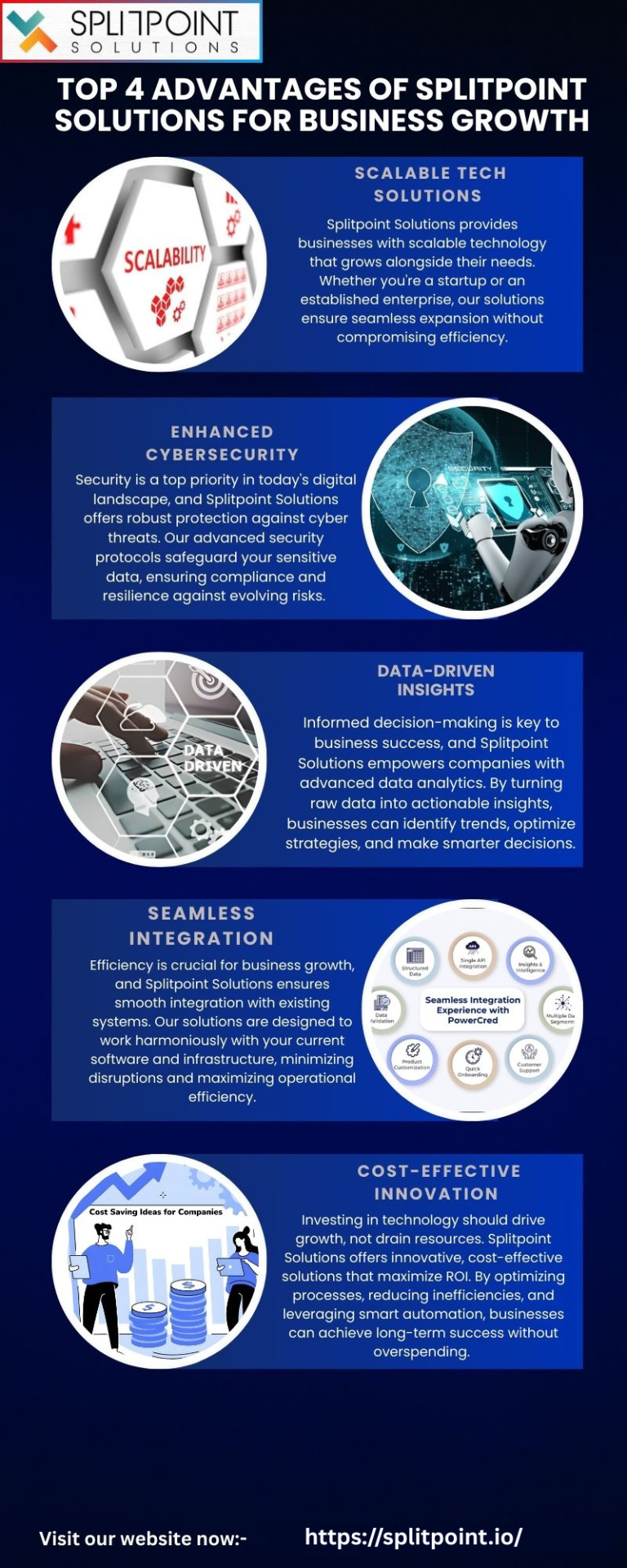
Splitpoint Solutions empowers businesses to accelerate growth by providing real-time visibility and control over their IT environments, enabling faster issue resolution, optimized performance, and enhanced end-user experiences. Visit now : https://splitpoint.io/
0 notes
Text
Application Performance Monitoring Market Growth Drivers, Size, Share, Scope, Analysis, Forecast, Growth, and Industry Report 2032
The Application Performance Monitoring Market was valued at USD 7.26 Billion in 2023 and is expected to reach USD 22.81 Billion by 2032, growing at a CAGR of 34.61% over the forecast period 2024-2032.
The Application Performance Monitoring (APM) market is expanding rapidly due to the increasing demand for seamless digital experiences. Businesses are investing in APM solutions to ensure optimal application performance, minimize downtime, and enhance user satisfaction. The rise of cloud computing, AI-driven analytics, and real-time monitoring tools is further accelerating market growth.
The Application Performance Monitoring market continues to evolve as enterprises prioritize application efficiency and system reliability. With the increasing complexity of IT infrastructures and a growing reliance on digital services, organizations are turning to APM solutions to detect, diagnose, and resolve performance bottlenecks in real time. The shift toward microservices, hybrid cloud environments, and edge computing has made APM essential for maintaining operational excellence.
Get Sample Copy of This Report: https://www.snsinsider.com/sample-request/3821
Market Keyplayers:
IBM (IBM Instana, IBM APM)
New Relic (New Relic One, New Relic Browser)
Dynatrace (Dynatrace Full-Stack Monitoring, Dynatrace Application Security)
AppDynamics (AppDynamics APM, AppDynamics Database Monitoring)
Cisco (Cisco AppDynamics, Cisco ACI Analytics)
Splunk Inc. (Splunk Observability Cloud, Splunk IT Service Intelligence)
Micro Focus (Silk Central, LoadRunner)
Broadcom Inc. (CA APM, CA Application Delivery Analysis)
Elastic Search B.V. (Elastic APM, Elastic Stack)
Datadog (Datadog APM, Datadog Real User Monitoring)
Riverbed Technology (SteelCentral APM, SteelHead)
SolarWinds (SolarWinds APM, SolarWinds Network Performance Monitor)
Oracle (Oracle Management Cloud, Oracle Cloud Infrastructure APM)
ServiceNow (ServiceNow APM, ServiceNow Performance Analytics)
Red Hat (Red Hat OpenShift Monitoring, Red Hat Insights)
AppOptics (AppOptics APM, AppOptics Infrastructure Monitoring)
Honeycomb (Honeycomb APM, Honeycomb Distributed Tracing)
Instana (Instana APM, Instana Real User Monitoring)
Scout APM (Scout APM, Scout Error Tracking)
Sentry (Sentry APM, Sentry Error Tracking)
Market Trends Driving Growth
1. AI-Driven Monitoring and Automation
AI and machine learning are revolutionizing APM by enabling predictive analytics, anomaly detection, and automated issue resolution, reducing manual intervention.
2. Cloud-Native and Hybrid APM Solutions
As businesses migrate to cloud and hybrid infrastructures, APM solutions are adapting to provide real-time visibility across on-premises, cloud, and multi-cloud environments.
3. Observability and End-to-End Monitoring
APM is evolving into full-stack observability, integrating application monitoring with network, security, and infrastructure insights for holistic performance analysis.
4. Focus on User Experience and Business Impact
Companies are increasingly adopting APM solutions that correlate application performance with user experience metrics, ensuring optimal service delivery and business continuity.
Enquiry of This Report: https://www.snsinsider.com/enquiry/3821
Market Segmentation:
By Solution
Software
Services
By Deployment
Cloud
On-Premise
By Enterprise Size
SMEs
Large Enterprises
By Access Type
Web APM
Mobile APM
By End User
BFSI
E-Commerce
Manufacturing
Healthcare
Retail
IT and Telecommunications
Media and Entertainment
Academics
Government
Market Analysis: Growth and Key Drivers
Increased Digital Transformation: Enterprises are accelerating cloud adoption and digital services, driving demand for advanced monitoring solutions.
Rising Complexity of IT Environments: Microservices, DevOps, and distributed architectures require comprehensive APM tools for performance optimization.
Growing Demand for Real-Time Analytics: Businesses seek AI-powered insights to proactively detect and resolve performance issues before they impact users.
Compliance and Security Needs: APM solutions help organizations meet regulatory requirements by ensuring application integrity and data security.
Future Prospects: The Road Ahead
1. Expansion of APM into IoT and Edge Computing
As IoT and edge computing continue to grow, APM solutions will evolve to monitor and optimize performance across decentralized infrastructures.
2. Integration with DevOps and Continuous Monitoring
APM will play a crucial role in DevOps pipelines, enabling faster issue resolution and performance optimization throughout the software development lifecycle.
3. Rise of Autonomous APM Systems
AI-driven automation will lead to self-healing applications, where systems can automatically detect, diagnose, and fix performance issues with minimal human intervention.
4. Growth in Industry-Specific APM Solutions
APM vendors will develop specialized solutions for industries like finance, healthcare, and e-commerce, addressing sector-specific performance challenges and compliance needs.
Access Complete Report: https://www.snsinsider.com/reports/application-performance-monitoring-market-3821
Conclusion
The Application Performance Monitoring market is poised for substantial growth as businesses prioritize digital excellence, system resilience, and user experience. With advancements in AI, cloud-native technologies, and observability, APM solutions are becoming more intelligent and proactive. Organizations that invest in next-generation APM tools will gain a competitive edge by ensuring seamless application performance, improving operational efficiency, and enhancing customer satisfaction.
About Us:
SNS Insider is one of the leading market research and consulting agencies that dominates the market research industry globally. Our company's aim is to give clients the knowledge they require in order to function in changing circumstances. In order to give you current, accurate market data, consumer insights, and opinions so that you can make decisions with confidence, we employ a variety of techniques, including surveys, video talks, and focus groups around the world.
Contact Us:
Jagney Dave - Vice President of Client Engagement
Phone: +1-315 636 4242 (US) | +44- 20 3290 5010 (UK)
#Application Performance Monitoring market#Application Performance Monitoring market Analysis#Application Performance Monitoring market Scope#Application Performance Monitoring market Growth#Application Performance Monitoring market Share#Application Performance Monitoring market Trends
0 notes
Text
How to Use Telemetry Pipelines to Maintain Application Performance.
Sanjay Kumar Mohindroo Sanjay Kumar Mohindroo. skm.stayingalive.in Optimize application performance with telemetry pipelines—enhance observability, reduce costs, and ensure security with efficient data processing. 🚀 Discover how telemetry pipelines optimize application performance by streamlining observability, enhancing security, and reducing costs. Learn key strategies and best…
#AI-powered Observability#Anonymization#Application Performance#Cloud Computing#Cost Optimization#Cybersecurity#Data Aggregation#Data Filtering#Data Normalization#Data Processing#Data Retention Policies#Debugging Techniques#DevOps#digital transformation#Edge Telemetry Processing#Encryption#GDPR#HIPAA#Incident Management#IT Governance#Latency Optimization#Logging#Machine Learning in Observability#Metrics#Monitoring#News#Observability#Real-Time Alerts#Regulatory Compliance#Sanjay Kumar Mohindroo
0 notes
Text
Revolutionising Road Construction with Technology: Enhancing Project Management for a Smarter Future
The road construction industry plays a vital role in shaping modern infrastructure, driving economic growth, and ensuring efficient transportation networks. However, it faces persistent challenges, including project delays, safety risks, cost overruns, and inefficient resource management. As construction projects grow in complexity, the need for innovative solutions to boost productivity and efficiency has never been more critical.
Learn more https://www.cyberswift.com/blog/revolutionising-road-construction-with-technology-enhancing-project-management-for-a-smarter-future/
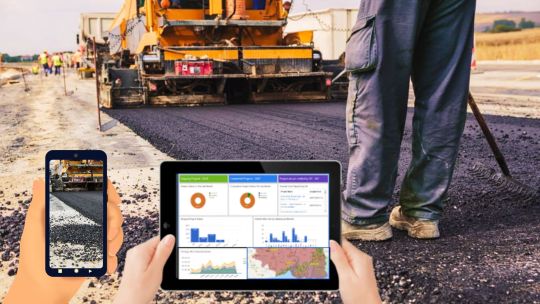
#road construction monitoring software#road project tracking system#csrmonitoringsoftware#road construction progress tracking#gis based road monitoring system#road construction management software#real time road project monitoring#road construction tracking application#construction project tracking system#road project progress monitoring#road asset management software#road construction analytics tools#road infrastructure monitoring system#construction monitoring software for roads#road project planning software#digital road project monitoring system#smart road monitoring solutions#road construction quality monitoring#road project performance tracking#road mapping and monitoring software
0 notes
Text
Jayson Murphy IT service

Website: http://jaysonmurphyitservicer.com/
Address: 609 New York Ave, Brooklyn, NY 11203, USA
Phone: 917-577-3337
Jayson Murphy IT Service is a comprehensive provider of managed IT solutions tailored to meet the unique needs of businesses. With a focus on enhancing operational efficiency and ensuring robust cybersecurity, we offer a range of services including network management, cloud solutions, data backup, and IT consulting. Our team of experienced professionals is dedicated to delivering reliable support and innovative technology strategies that empower organizations to thrive in a digital landscape. At Jayson Murphy IT Service, we prioritize customer satisfaction and work closely with our clients to develop customized solutions that drive growth and success.
Business Email: [email protected]
Facebook: https://facebook.com/abdulmanufacturerlimited
Twitter: https://twitter.com/abdulmanufacturerlimited
Instagram: https://instagram.com/abdulmanufacturerlimited
TikTok: https://tiktok.com/@abdulmanufacturerl
#IT services#Managed IT services#IT support#IT consulting#Technology solutions#IT staff training#Cybersecurity training#Software training workshops#Technology bootcamps#IT certification programs#Custom software development#E-commerce solutions#CRM implementation#Workflow automation solutions#Digital transformation services#IT performance monitoring#Network monitoring tools#Application performance analysis#IT health checks#Data analytics services#Brooklyn NY IT services#IT support in Brooklyn NY#Managed IT services Brooklyn NY#Cybersecurity Brooklyn NY#IT consulting Brooklyn NY#Remote work solutions#Team collaboration tools#Video conferencing solutions#Unified communication systems#Project management software
1 note
·
View note
Text
OneMonitar: Empowering Workplace Oversight
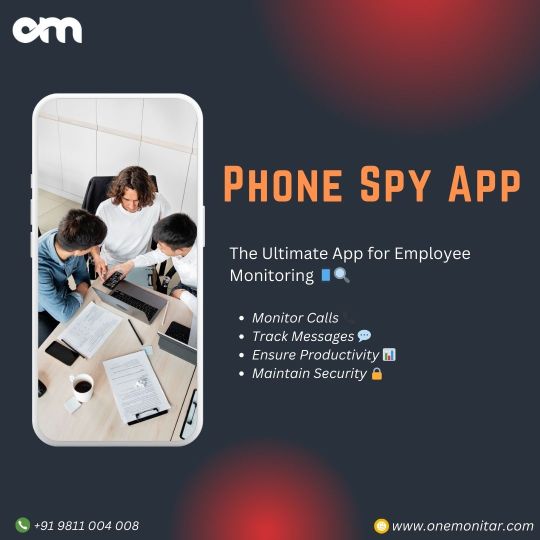
Unlock comprehensive employee monitoring with OneMonitar. Monitor calls, track messages, ensure productivity, maintain security, and utilize GPS tracking. Enhance workplace efficiency and accountability effortlessly.
#Employee surveillance tool#Workforce tracking software#Staff supervision application#Workplace behavior analysis platform#Team activity monitoring solution#Personnel performance management tool
0 notes
Text
Identifying Applications Writing to a Table in SQL Server: Strategies and Tools
Determining which applications are writing to a given table in SQL Server can be approached in several ways, depending on your access level, the tools you have at your disposal, and whether you need to monitor this activity in real-time or over a period. Here are some methods to consider: 1. SQL Server Profiler / Extended Events SQL Server Profiler and Extended Events are tools for monitoring…
View On WordPress
#application tracking#database performance#Extended Events#SQL Server monitoring#SQL Server Profiler
0 notes
Text
Understanding Application Performance Monitoring and Top Tools to Optimize Your Software
In today’s fast-paced digital world, maintaining seamless performance for applications is crucial to ensuring customer satisfaction, optimizing business processes, and achieving competitive advantages. Application performance monitoring (APM) is an essential strategy that enables businesses to track, analyze, and enhance the performance of software applications. With the right application performance monitoring tools, companies can quickly identify issues, resolve them, and maintain a high-performing, reliable digital experience for their users.
In this blog, we will explore the concept of application performance monitoring, its importance, and a list of top application performance monitoring tools that can help businesses maintain application health.
What is Application Performance Monitoring (APM)?
Application Performance Monitoring (APM) refers to the process of managing and tracking the performance, availability, and overall functionality of software applications. This involves monitoring metrics such as response time, transaction time, CPU and memory usage, error rates, and user experiences.
APM is vital for both identifying and solving performance-related issues, such as slow loading times, system crashes, or user interface problems that may affect the end-user experience. It provides real-time data and insights that help developers and IT teams optimize application performance, resolve potential bottlenecks, and improve operational efficiency.
Importance of Application Performance Monitoring
In modern, complex IT environments, application performance monitoring is indispensable for several reasons:
1. Improves User Experience
Slow-loading applications or frequent crashes can frustrate users and lead to high churn rates. APM helps to track and improve key performance metrics like page load times and server response times, ensuring that users have a smooth and seamless experience.
2. Prevents Revenue Loss
For e-commerce websites and SaaS businesses, poor application performance can directly lead to revenue loss. Downtime or slow transactions can deter customers from completing purchases or using services. APM allows companies to detect issues early and minimize downtime, protecting revenue streams.
3. Identifies and Resolves Bottlenecks
APM tools can highlight the exact location of performance bottlenecks, whether they occur in the database, server, or codebase. By identifying the root cause, developers can address issues quickly and efficiently, reducing the time spent on troubleshooting.
4. Enhances Collaboration
Many APM tools provide centralized dashboards that offer detailed insights into application performance. These dashboards can be shared across teams, fostering collaboration between developers, IT operations, and business stakeholders.
5. Improves Resource Utilization
Monitoring how your application consumes resources (e.g., CPU, memory, bandwidth) ensures that resources are used efficiently. With APM tools, businesses can optimize resource allocation, leading to better performance and reduced infrastructure costs.
Key Features of Application Performance Monitoring
When evaluating application performance monitoring tools, it’s important to consider several key features that are crucial for effective monitoring:
Real-Time Monitoring: Provides live data on application performance, giving instant insights into response times, user behavior, and system resources.
End-to-End Transaction Monitoring: Tracks the entire user journey across an application, from user requests to back-end transactions, identifying performance bottlenecks at every stage.
Error Detection and Reporting: Automatically detects and logs errors, allowing developers to fix issues quickly and efficiently.
Resource Monitoring: Tracks resource usage such as CPU, memory, and disk I/O, helping to prevent server overloads or application crashes.
Scalability: The tool should scale with your applications, whether you are monitoring a small application or a large, complex system.
User Experience Monitoring: Collects data on how users are interacting with your application, offering insights into user satisfaction and behavior.
Top Application Performance Monitoring Tools
Here’s a list of some of the best application performance monitoring tools that help businesses stay on top of application health, performance, and user experience.
1. New Relic
New Relic is one of the most comprehensive APM tools on the market, offering real-time monitoring of web and mobile applications. It provides detailed insights into every aspect of application performance, from server response times to individual user transactions. New Relic’s user-friendly dashboard and customizable alerts make it easy to identify and resolve performance issues.
Key Features: Real-time monitoring, advanced analytics, error tracking, cloud and microservices support.
Best For: Companies looking for an all-in-one solution for both small and large-scale applications.
2. Dynatrace
Dynatrace uses artificial intelligence to deliver full-stack monitoring, offering insights into application performance, user behavior, and infrastructure health. Dynatrace’s AI-driven approach allows it to automatically detect and fix problems in real-time, making it ideal for large, complex environments.
Key Features: AI-driven monitoring, root-cause analysis, end-to-end transaction monitoring, cloud-native support.
Best For: Enterprises managing complex cloud-native environments or microservices architectures.
3. AppDynamics
AppDynamics, a Cisco company, offers a full suite of application performance monitoring tools, providing real-time monitoring of application performance, infrastructure, and business outcomes. It gives detailed insights into the health of your application, allowing businesses to correlate performance with customer experience and revenue.
Key Features: Code-level diagnostics, business transaction monitoring, machine learning-based anomaly detection.
Best For: Businesses looking for deep visibility into both application performance and business metrics.
4. Datadog
Datadog is a popular choice for businesses looking for infrastructure and application performance monitoring in one platform. It offers real-time monitoring and analytics for cloud-based applications, providing end-to-end visibility across the stack. Datadog also integrates seamlessly with over 400 tools and services, making it highly versatile.
Key Features: Real-time performance monitoring, customizable dashboards, full-stack visibility, anomaly detection.
Best For: Cloud-based environments and teams looking for strong integration capabilities.
5. SolarWinds AppOptics
SolarWinds AppOptics is a lightweight, easy-to-use APM tool that provides real-time monitoring of applications and infrastructure. It allows users to monitor application performance metrics alongside infrastructure metrics, helping to identify performance bottlenecks across the stack.
Key Features: End-to-end monitoring, custom metrics, real-time performance insights, affordable pricing.
Best For: Small to medium-sized businesses looking for a budget-friendly APM tool.
6. Elastic APM
Elastic APM, part of the Elastic Stack, is an open-source APM tool that integrates with Elasticsearch and Kibana. It provides full-stack visibility into your application, from the server level to individual user transactions. Elastic APM is ideal for businesses already using the Elastic Stack for data analysis and log management.
Key Features: Open-source, real-time insights, seamless integration with Elasticsearch and Kibana, cost-effective.
Best For: Teams using the Elastic Stack or looking for a customizable, open-source APM solution.
Best Practices for Application Performance Monitoring
To get the most out of your APM strategy, follow these best practices:
Monitor in Real-Time: Continuous monitoring allows you to detect and resolve performance issues as they occur, minimizing downtime and ensuring optimal performance.
Set Custom Alerts: Configure your APM tool to send alerts for specific performance metrics, such as CPU usage, error rates, or response times. This allows for faster identification and resolution of potential problems.
Focus on End-User Experience: While monitoring system resources is important, understanding the end-user experience is crucial. Measure key metrics such as page load times, transaction times, and user satisfaction.
Correlate Performance with Business Outcomes: Link application performance to business metrics, such as conversion rates or revenue. This will help you understand how performance impacts the bottom line.
Analyze Historical Data: Look at historical trends in your application’s performance to identify patterns and potential future issues. This can help with capacity planning and long-term optimization.
Conclusion
Application performance monitoring is a critical component of maintaining reliable, high-performing applications that meet user expectations and business goals. By using the right application performance monitoring tools, businesses can gain valuable insights into their applications, troubleshoot issues before they escalate, and ensure optimal performance.
From comprehensive solutions like New Relic and Dynatrace to open-source platforms like Elastic APM, choosing the right tool depends on your business needs, application complexity, and budget. With effective monitoring in place, businesses can deliver seamless digital experiences, maximize operational efficiency, and stay ahead of performance issues.
0 notes
Text
SigNoz: Free and Open Source Syslog server with OpenTelemetry
SigNoz: Free and Open Source Syslog server with OpenTelemetry @signozhq #homelab #SigNozOpenSourceAlternative #DatadogVsSigNoz #MonitorApplicationsWithSigNoz #ApplicationPerformanceManagementTools #DistributedTracingWithSigNoz #MetricsAndDashboards
I am always on the lookout for new free and open-source tools in the home lab and production environments. One really excellent tool discovered recently is a tool called SigNoz. SigNoz is a free and open-source syslog server and observability program that provides an open-source alternative to Datadog, Relic, and others. Let’s look at SigNoz and see some of the features it offers. We will also…
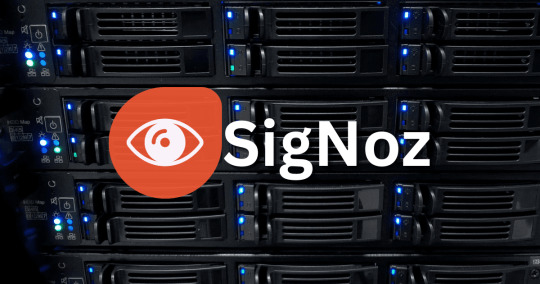
View On WordPress
#alert systems in observability#application performance management tools#Datadog vs. SigNoz#distributed tracing with SigNoz#exceptions monitoring best practices#log management solutions#metrics and dashboards guide#monitor applications with SigNoz#SigNoz and OpenTelemetry integration#SigNoz open-source alternative
1 note
·
View note
Text
Why Monitoring User Experience is Crucial for Application Performance: Insights for a Network Monitoring Company
In the modern world where tight cooperation of different links in the chain is critical, monitoring user experience is not just a luxurious necessity but a must. For any application monitoring company, ensuring optimal performance and user satisfaction is at the core of their offerings.
In this article, the author tries to explain why it is important to monitor the user experience and why is it good for the application performance especially for businesses using cloud-based network monitoring solutions.
Understanding User Experience Monitoring
User experience monitoring is a form of capturing as well as analyzing how the user of an application engages with the product.
Based on its results, it works out several factors such as the time it takes to load the page, its speed, the frequency of errors, or the degree of satisfaction of the users.
This aids organizations in getting insight into problematic events that may occur in real life and addressing them before they reach the customers.
For an application monitoring company, user experience monitoring goes beyond simple performance tracking. It gives a centralized perspective on how an application performs when in various states and how the performance is perceived to be affecting the business.
With Cloud-Based Network monitoring it becomes easy for any user to monitor beyond just tracking. It provides a detailed view of how different conditions make the application behave.

Why User Experience Matters
First Impressions are Key:
The first interaction of a user with an application is crucial for monitoring user experience. If the application fails to load or is slow it leaves a poor first impression. Monitoring user experience makes sure that these issues are resolved, enabling the network monitoring company to maintain a positive image.
Direct Impact on Revenue:
The performance of your application has a direct effect on the business revenue.
If an application demands much time to open or the loading time is relatively high, a business may lose potential customers. The difference of one second in any conversion process can dramatically harm conversion rates and the resulting revenues.
Hence through cloud-based network monitoring, organizations can identify performance problem areas and offer high-caliber applications.
Improved User Retention:
Modern times expect fast and reliable applications. If these expectations are not met, then the bounce and churn rates are going to be high. Although the network monitoring company can continuously assess the quality of its services from the users’ standpoint, the clients’ applications would remain dependable, and therefore users would be retained and satisfied in the long run.
Identifying Hidden Issues:
With conventional approaches, it is possible that an organization might not notice other, less severe but very important factors such as slow page loading or even minute bugs. Monitoring networks on the cloud offers a comprehensive view that enables one to detect such pitfalls, which would otherwise fester and later blow up into considerable disruptions of a desirable positive user experience.
Data-Driven Decision Making:
User Experience Monitoring gives information on user interactions hence decisions may be made on the interfaces/UX design changes, new features, and performance enhancement. This helps a network monitoring company to better match its strategies with the user needs.
Supports Agile and DevOps Practices:
Monitoring of user experience is crucial in today’s tightly-knit development setting, especially when Agile and DevOps approaches are in use. They aid in guaranteeing that frequent launches and frequent software updates will not be a detriment, enabling the teams to retain excellent quality applications.
Role of Cloud-Based Network Monitoring in User Experience
Cloud-based network monitoring offers scalability and flexibility, enabling it to efficiently handle large data volumes and diverse user bases across multiple geographies, ensuring consistent performance even during high-traffic periods.
The use of real-time alerts allows cloud-based monitoring solutions to detect performance anomalies in real-time so that a network monitoring company may prompt remedial action before such issues interfere with client experience.
Further, it offers full coverage of the application and the server response issues, network latency, and third parties it's used in to ensure that issues are easily spotted and fixed to maintain efficiency.
Furthermore, cloud computing can provide an efficient way of monitoring as it does not require huge infrastructure on its own, which plays an advantage to small to mid-sized companies that are involved in network monitoring services business.

Best Practices for Effective User Experience Monitoring
Leverage Real-User Monitoring (RUM):
Real-user monitoring produces real-world user scenarios and generates metrics regarding the availability of users as well as the behavior of applications under varying conditions.
Use Synthetic Monitoring:
Synthetic monitoring mimics actual user presence so that engineers can have an idea of the various glitches present before being reported by the users.
Employ Advanced APM Tools:
Application Performance Monitoring tools give further details of backend problems including slow query to the database or poorly performing APIs.
Cover All Devices and Platforms:
Check that all your monitoring is cross-device and cross-platform to make sure all your clients are being serviced properly.
Integrate with Cloud-Based Monitoring:
Combining user experience monitoring with cloud-based network monitoring offers a complete view of both frontend and backend performance, helping resolve issues holistically.

Conclusion
Maintaining metrics of the applied user experience is an important endeavor in the contemporary environment for guaranteeing the performance of the application and the value it offers the users.
For a network monitoring company, this means the possibility to add user experience monitoring as a value-added service to their portfolio which will result in improved business performance. Utilizing cloud-based network monitoring solutions enables companies to gain real-time insights, resolve issues proactively, and maintain a high level of application performance.
Indeed, it is not only about mitigation of problems but it is about improving the user experience once the proper monitoring practices are employed.
A network monitoring company can therefore create synergy when working towards ensuring that user satisfaction as well as application performance is to ensure that long-lasting relationship with their clients is fostered hence enhancing user retention and ultimately business success in today’s digital world.
#network monitoring#application monitoring#cloud networking#technology#application performance monitoring company#Splitpoint Solutions
0 notes
Text
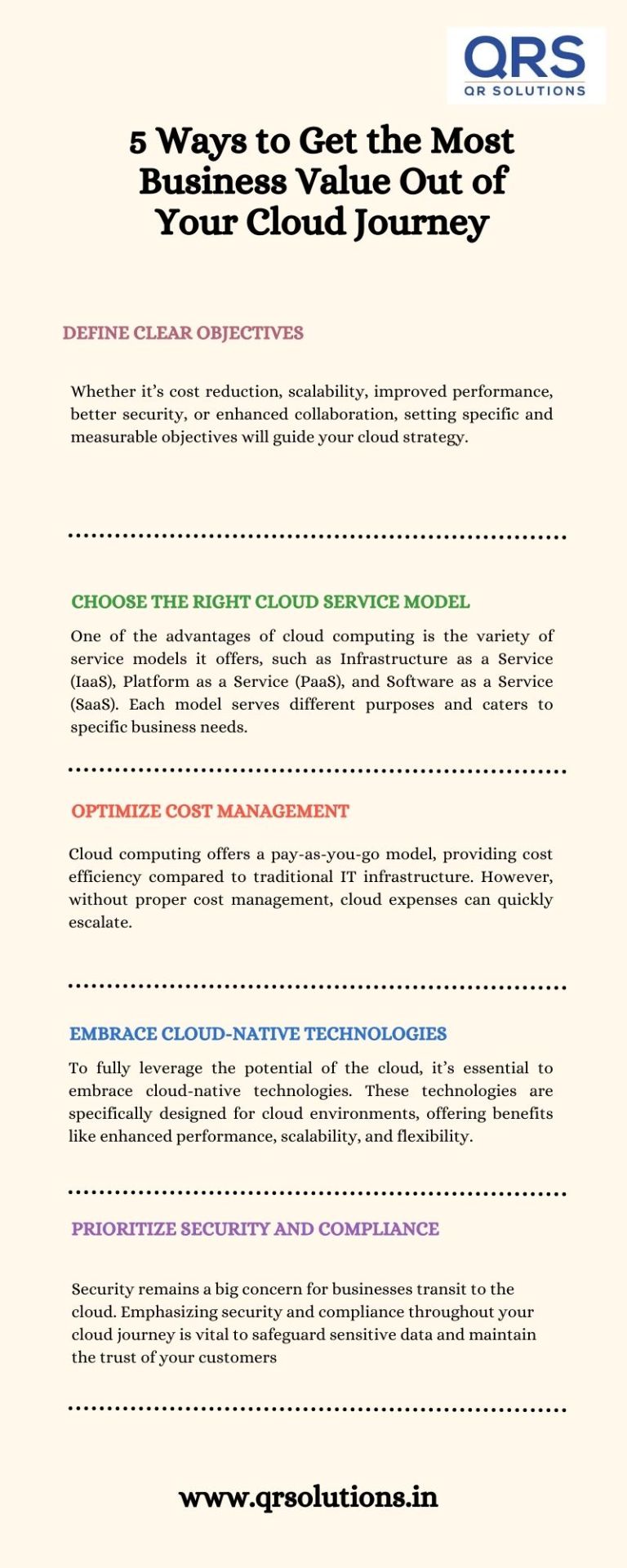
In today’s fast-paced digital landscape, the cloud has emerged as a transformative technology that empowers businesses with flexibility, scalability, and cost-effectiveness. Migrating to the cloud is no longer an option but a necessity to stay competitive.
#Cloud migration strategies#Business value optimization#Cloud journey best practices#Cloud adoption benefits#Cost-effective cloud utilization#Cloud-native applications#Cloud scalability#Hybrid cloud solutions#Cloud security measures#Cloud cost management#Cloud performance monitoring#Cloud vendor selection#Cloud infrastructure optimization#Cloud data management#Agile cloud transformation
0 notes
Text
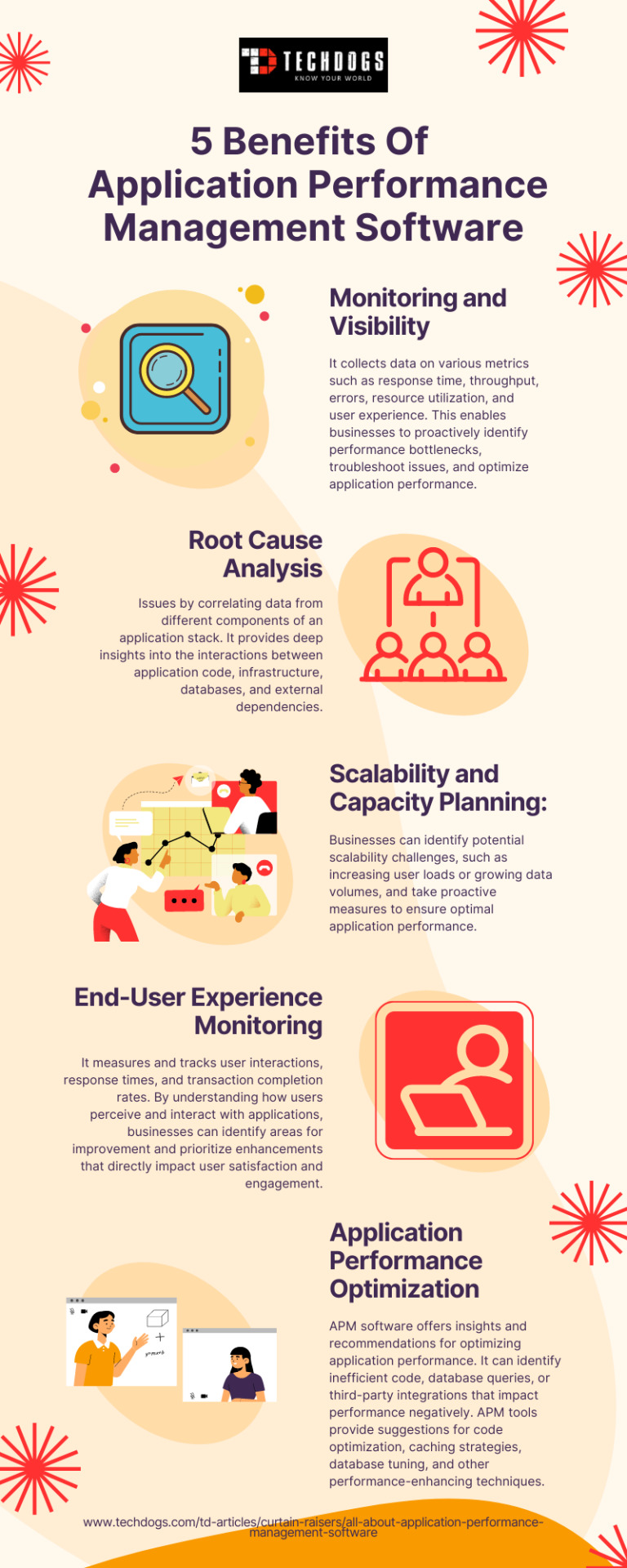
What Are The Benefits Of Application Performance Management Software?
APM Software places user experience and application insights at the heart of the application network infrastructure and its operating system.
0 notes
Text
4 Arguments for Performance Management Software Use in Small Businesses!
MyTalentPlanner helps you to develop strategy, plan, and execution plans. We provide all details about the Performance Tracking system, talent management software, Employee Efforts Aligned With Strategies, Cost Saving, etc. For more info, visit our blog today!

0 notes
Text

Written by Ryan Smart
Minimum super licence age
Verstappen joined Toro Rosso at the age of 16 and successfully obtaining his super licence in time for the 2015 season. But in January of that year, the FIA brought in new regulations which forced new drivers to be 18 years of age and hold a valid driving licence before they could obtain a super licence.
Moving under braking
At the 2016 Japanese Grand Prix, Verstappen avoided punishment for moving under braking while defending from Lewis Hamilton, despite the Mercedes driver needing to take evasive action. The FIA subsequently banned drivers from changing direction under braking while defending - although the rule is subjective and therefore isn't applied in all situations.
Unsportsmanlike behaviour clarifications
The FIA issued a clarification on regulations surrounding unsportsmanlike behaviour and physical altercations after an incident between Verstappen and Esteban Ocon following the 2018 Brazilian Grand Prix.
Overtaking and defending guidelines
Verstappen and Lewis Hamilton had a fierce on-track battle at the 2021 Brazilian Grand Prix, with the Dutchman forcing Hamilton off the track on more than one occasion. Subsequently, the FIA decided to issue a new guideline for defending, which stated that if an overtaking car is 'significantly alongside, the defending driver must leave at least one car's width of space'.
Parc ferme guidelines
After the Grand Prix, cameras caught Verstappen inspecting Hamilton's rear wing in parc ferme conditions - which was prohibited. He was given a €50,000 fine by the FIA, who subsequently enhanced security measures and monitoring for upcoming Grands Prix and warned that drivers who breached the regulations in future could receive time penalties.
Post-race celebration guidelines
The FIA released new guidelines surrounding post-race dangerous driving after Verstappen performed burnouts across the line to celebrate his victory at the 2021 Styrian Grand Prix. Drivers now must travel safely back to the pit lane after finishing each Grand Prix and cannot endanger other drivers.
Pit lane guidelines
Drivers were told they could not cross any part of their car over the pit exit line while rejoining the circuit. Verstappen did so during the race but escaped a penalty. In future, however, any violation would cause a driver to be sanctioned.
New safety car rule
After the 2022 Saudi Arabia Grand Prix, the FIA intervened after Verstappen pulled up alongside Charles Leclerc before a safety car restart. A clarification was added to the rulebook which stated that drivers could not have any part of their car alongside another car before the safety car restart line.
Track limits clarification
After Verstappen overtook Kimi Raikkonen while off the track to finish third in the 2017 United States Grand Prix - he was subsequently penalised and demoted to fourth - the FIA released a new clarification for track limits. Track limits would subsequently be defined by white lines, with that particular rule being refined and adjusted over time.
Minimum super licence age update
While the original rule stated that drivers had to be 18 years of age, the FIA added a discretion to the wording - which they likely would have applied had Verstappen been in such a situation in 2015. Following an application from Mercedes to allow Kimi Antonelli - who is 17 - to drive in practice at this year's Italian Grand Prix, the rule now states: 'At the sole discretion of the FIA, a driver judged to have recently and consistently demonstrated outstanding ability and maturity in single-seater formula car competition may be granted a super licence at the age of 17 years old'.
311 notes
·
View notes